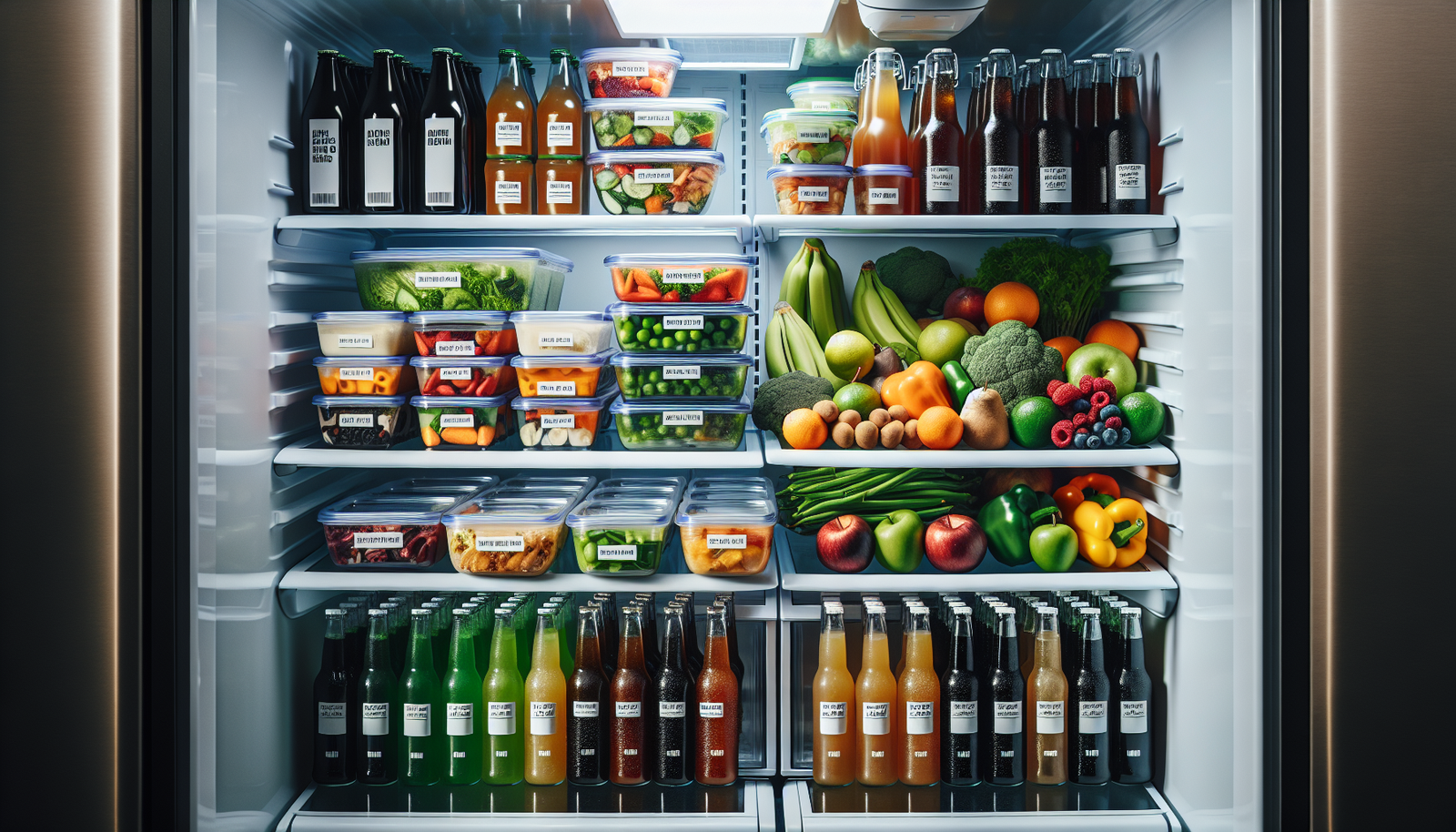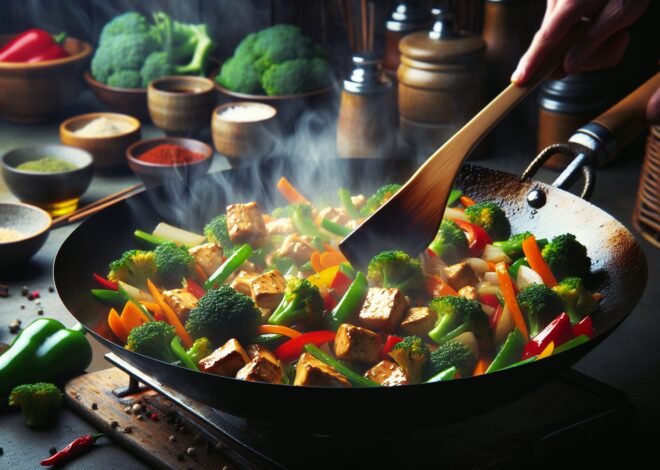
How to Store Leftovers Safely: Avoid Spoiling
Leftovers are a great way to reduce food waste, but improper storage can lead to spoilage. This guide will show you the best practices for safely storing leftovers, ensuring they stay fresh and flavorful while minimizing the risk of foodborne illnesses.
Why Storing Leftovers Properly Matters
Leftovers are a common part of many households, but storing them properly is crucial. Doing so helps maintain their quality and ensures they’re safe to eat. Proper storage can prevent potential health risks and also extends the shelf life of your meals. Let’s explore why these practices are so essential.
Preventing Foodborne Illnesses
Improper storage can lead to foodborne illnesses, causing significant health issues. Bacteria such as Salmonella, E. coli, and Listeria thrive in improperly stored foods. Storing leftovers correctly minimizes the risk of bacterial growth. This involves using airtight containers, refrigerating promptly, and keeping foods at safe temperatures. These practices reduce the chance of contamination.
Keeping Leftovers Fresh Longer
Proper storage preserves the flavor and texture of leftovers. Airtight containers prevent exposure to air, maintaining moisture and taste. Refrigerating or freezing promptly after cooking slows down spoilage. Use containers that are suitable for the type of food, ensuring they don’t absorb odors or moisture. This approach helps you enjoy delicious meals even days later.
Common Mistakes in Leftover Storage
Many people make simple mistakes that can lead to spoiled food. Stacking food too high in the refrigerator limits airflow, causing uneven cooling. Storing hot food directly in the fridge raises the internal temperature, risking spoilage. Additionally, not labeling and dating leftovers causes confusion about their freshness. Avoiding these errors keeps your food safer and tastier.
Best Practices for Storing Leftovers
To maintain the quality and safety of leftovers, adopting the right storage practices is key. These methods help you make the most of your meals, reducing waste and ensuring delicious future meals. Let’s dive into some effective strategies.
Choosing the Right Containers
Containers play a vital role in preserving leftover quality. Opt for glass or high-quality plastic containers with tight-fitting lids. Glass is non-porous and doesn’t retain flavors or odors. For convenience, choose containers that are microwave and dishwasher safe. Stackable containers save space in your fridge or freezer, making organization easier.
Labeling and Dating Leftovers
Labeling containers is essential for managing leftovers. Use waterproof labels and pens to note the contents and date of storage. This practice prevents confusion and ensures you consume food before it spoils. A simple labeling system can save time and avoid food waste.
Correct Refrigeration and Freezing Techniques
Refrigeration and freezing are crucial for keeping leftovers fresh. Store leftovers in the refrigerator within two hours of cooking. Set your fridge to 40°F (4°C) or below, and your freezer to 0°F (-18°C). When freezing, use freezer-safe containers to prevent freezer burn. Divide large quantities into smaller portions for quicker freezing and reheating.
How to Reheat Leftovers Safely
Reheating leftovers without losing their quality is an art. Doing it safely is a science. Balancing both ensures you enjoy meals as tasty as when first cooked. Here, we’ll explore how to reheat different foods effectively.
Best Ways to Reheat Different Foods
Different foods require specific reheating methods. Soups and stews reheat well on the stove, maintaining even heating. For baked goods, use an oven to retain crispiness. Microwave works for most foods, but add a splash of water to prevent drying. Stirring or turning food midway ensures even heating.
Avoiding Texture Loss When Reheating
Maintaining texture is vital for appetizing leftovers. Avoid microwaving bread or pastries as it makes them soggy. Instead, use a toaster oven for crisp results. Cover dishes with a damp paper towel in the microwave to lock in moisture and maintain texture.
Safe Reheating Temperatures
Heating leftovers to the right temperature is crucial for safety. The USDA recommends reheating to 165°F (74°C) to kill harmful bacteria. Use a food thermometer to check the internal temperature. Stir or rotate food during heating to ensure even temperature distribution.
Conclusion
Storing leftovers safely is key to preventing food waste and keeping your meals fresh. By using the right containers, following proper storage practices, and reheating correctly, you can enjoy your leftovers without the risk of spoilage or foodborne illness. With these tips, you’ll ensure that your meals stay delicious and safe to eat.
FAQ
How long can leftovers stay fresh in the fridge?
Leftovers typically stay fresh for 3 to 4 days in the fridge. Storing them properly at a consistent temperature helps maintain their quality and safety. Always check for signs of spoilage before consuming.
What containers are best for storing leftovers?
Use airtight glass or BPA-free plastic containers for storing leftovers. These containers preserve freshness and prevent contamination. Opt for containers with secure lids to avoid spills and leaks in the fridge.
Can I freeze leftovers for later use?
Yes, freezing leftovers extends their shelf life significantly. Use freezer-safe bags or containers to prevent freezer burn. Label them with the date to track freshness and use within 2 to 3 months for the best quality.
How should I reheat leftovers to maintain flavor?
Reheat leftovers on the stove or in the oven for even heating and flavor retention. Microwaving is quicker but can cause uneven heating. Stirring or flipping food halfway through can help maintain texture and flavor.
What’s the best way to avoid leftover spoilage?
Store leftovers in airtight containers and refrigerate promptly. Keep your fridge at the right temperature, around 40°F (4°C). Regularly check and consume leftovers within recommended time frames to prevent spoilage.
How should I label leftovers for safe storage?
Label leftovers with the date of preparation. Use a permanent marker on masking tape or labels. Clear labeling helps track storage time and ensures you consume them while they’re still safe and fresh.











